Brodmann Areas
Rachel Jessop and Jim Hutchins
Objective
1. Understand the importance of Brodmann areas, especially the motor, somatosensory, visual, auditory, and prefrontal cortices.

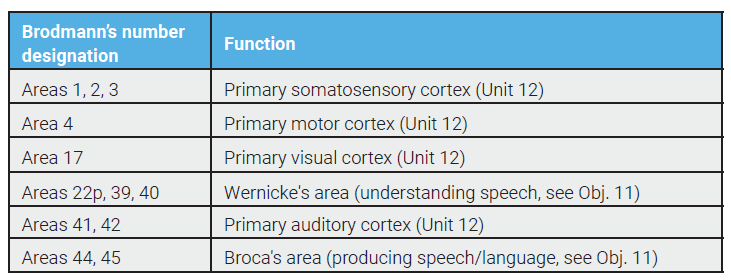
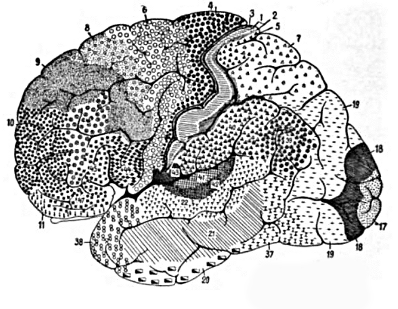
Returning to the cerebral cortex, now that we have some landmarks and lobes in mind, we can begin to further subdivide the cortex. The most common mapping system for the cortex was developed by Korbinian Brodmann in the late 1800s and early 1900s.
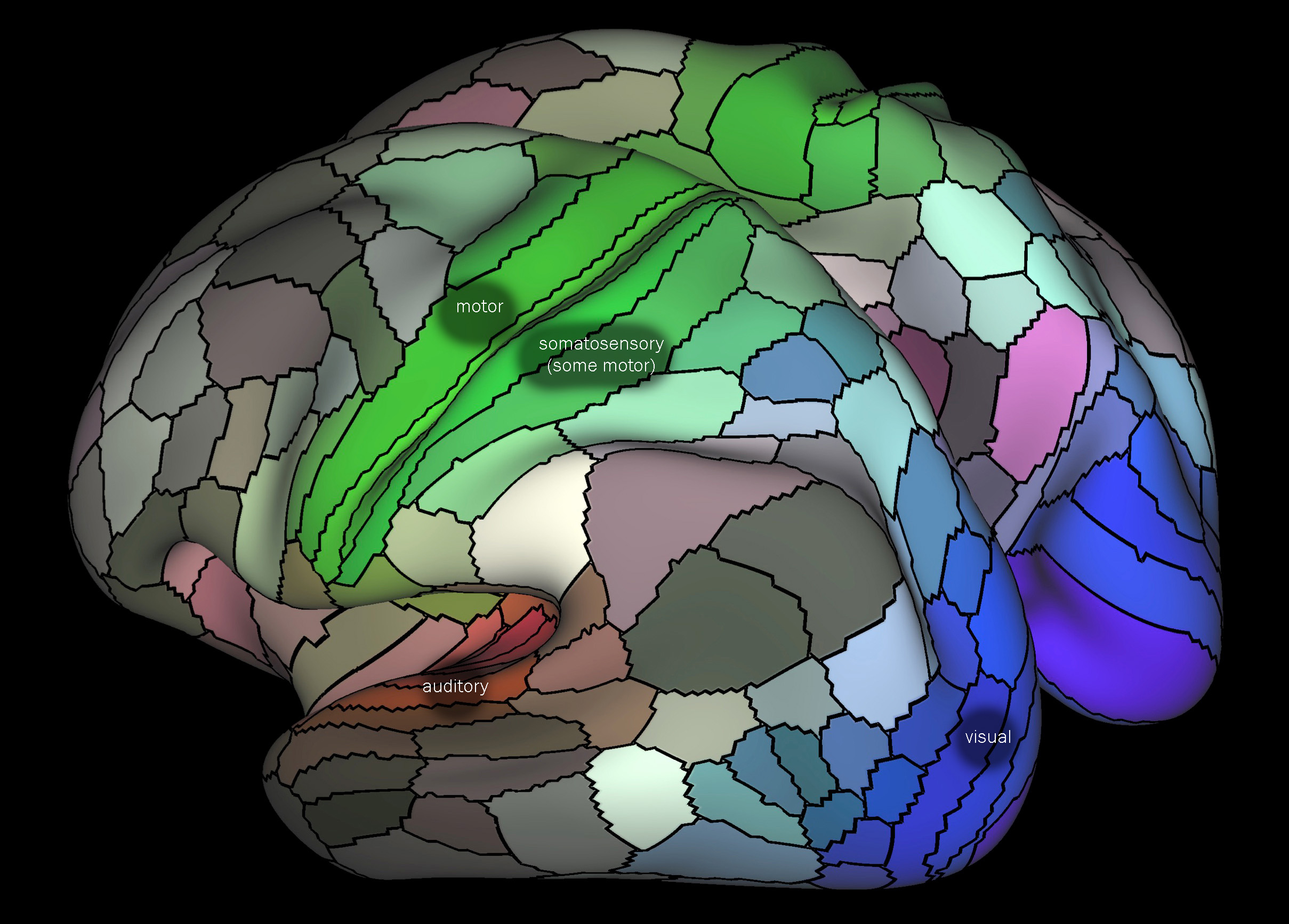
Brodmann was a German scientist who started slicing a brain and looking at the sections through a microscope. It’s surprising, as shown in the multicolored map developed in 2016 by Glasser and van Essen, how much modern maps resemble the classic map of Brodmann.
For no reason that we can fathom, Brodmann started at the top and cut horizontal sections. Most of the cerebral cortex has six layers of cells, but the way the cells are packed and the shape of the cells are different in different places. The first pattern of cell shapes and packing he named Area 1; the second, Area 2; and so forth. The last area he numbered was Area 52.2
Some of the areas are synonymous with functional areas of the cortex and are still used today; others are obscure. Some of the area numbers you will frequently encounter are listed.
 Parietal Lobe
Parietal Lobe
Areas 3, 1, and 2 (postcentral gyrus): primary somatosensory cortex, receiving information about the face and body surface. No one knows why we list them in this order. Taste is also here, and nearby in area 43.
2 Sadly, while in some animals there is an area 51, he skipped area 51 in humans. Maybe it’s a secret government coverup (http://skepdic.com/area51.html).

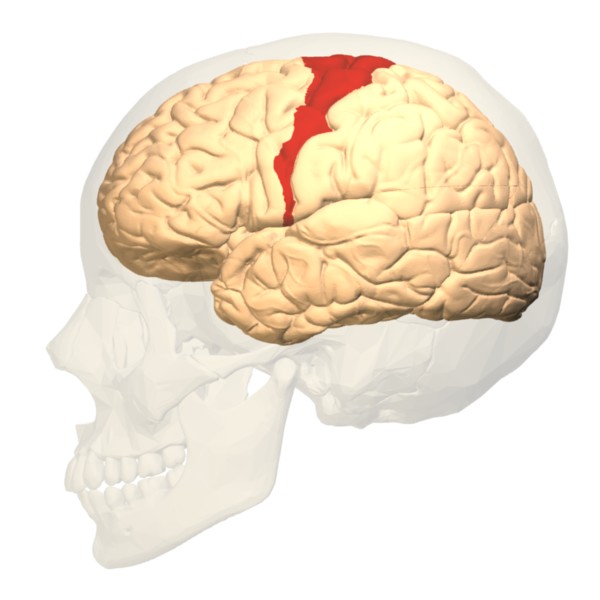
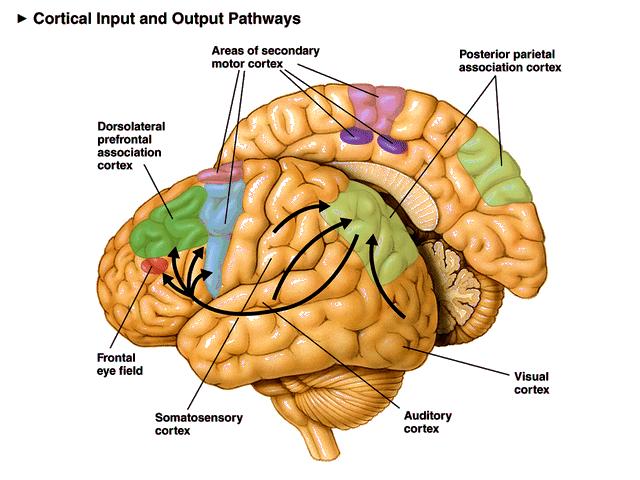
Occipital Lobe
Areas 17, 18 and 19: Visual cortex (sensory, sight). Area 17 is also called primary visual cortex (V1) or striate cortex.
Temporal Lobe
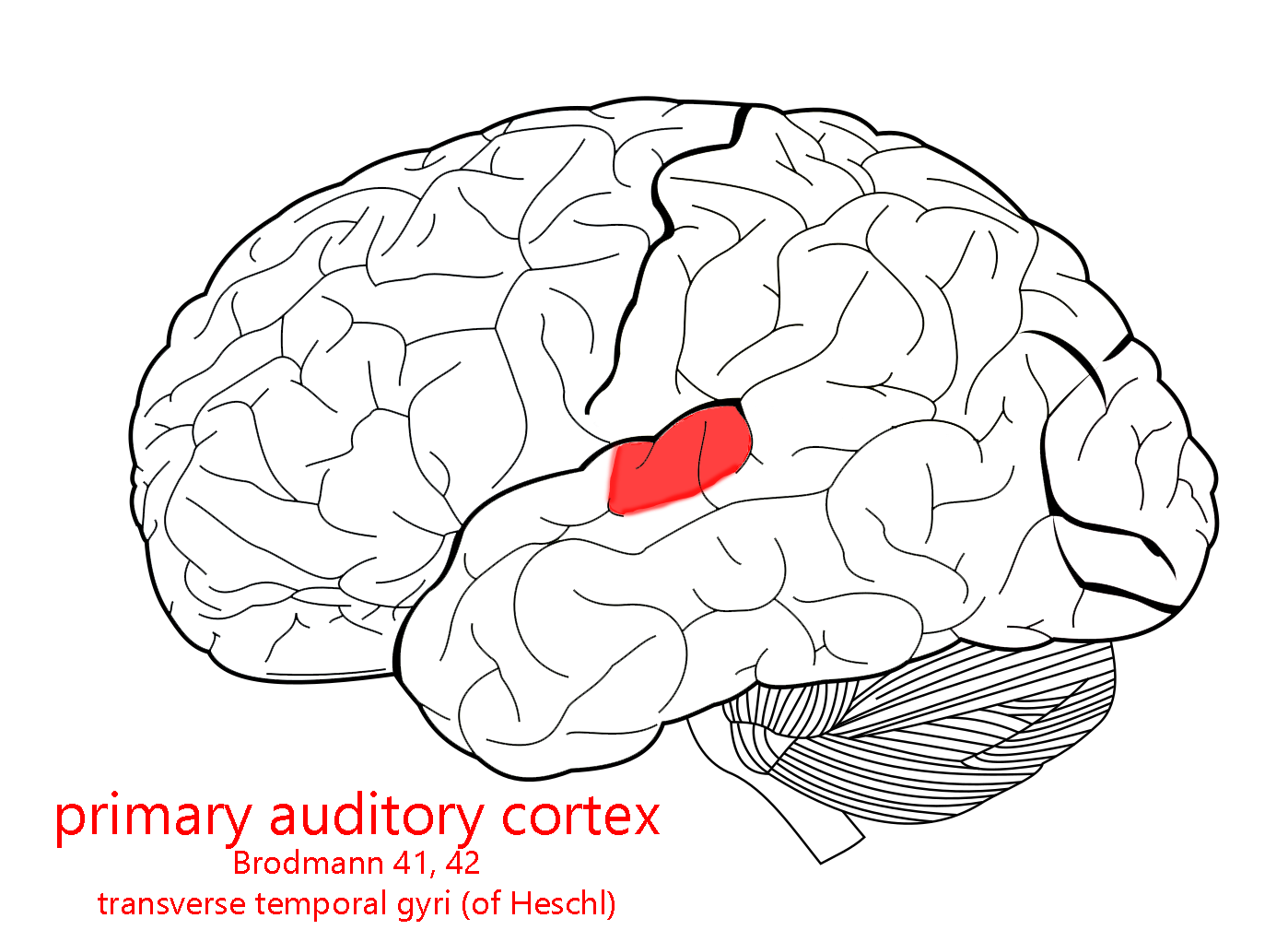 Areas 41 and 42: Primary auditory cortex (sensory, hearing).
Areas 41 and 42: Primary auditory cortex (sensory, hearing).
Area 22p (posterior part of 22): Wernicke’s area. Responsible for the understanding of speech sounds.
Frontal Lobe
Area 4: (precentral gyrus): primary motor cortex, sending axons to the α motor neurons of spinal cord (executing movement).
Area 6: supplementary motor area (planning or imagining movement)
Area 8: frontal eye fields(eye movements).
Areas 44 and 45: Broca’s area. In most people, Broca’s area on the left side is responsible for the production of speech (movements of the throat and tongue).
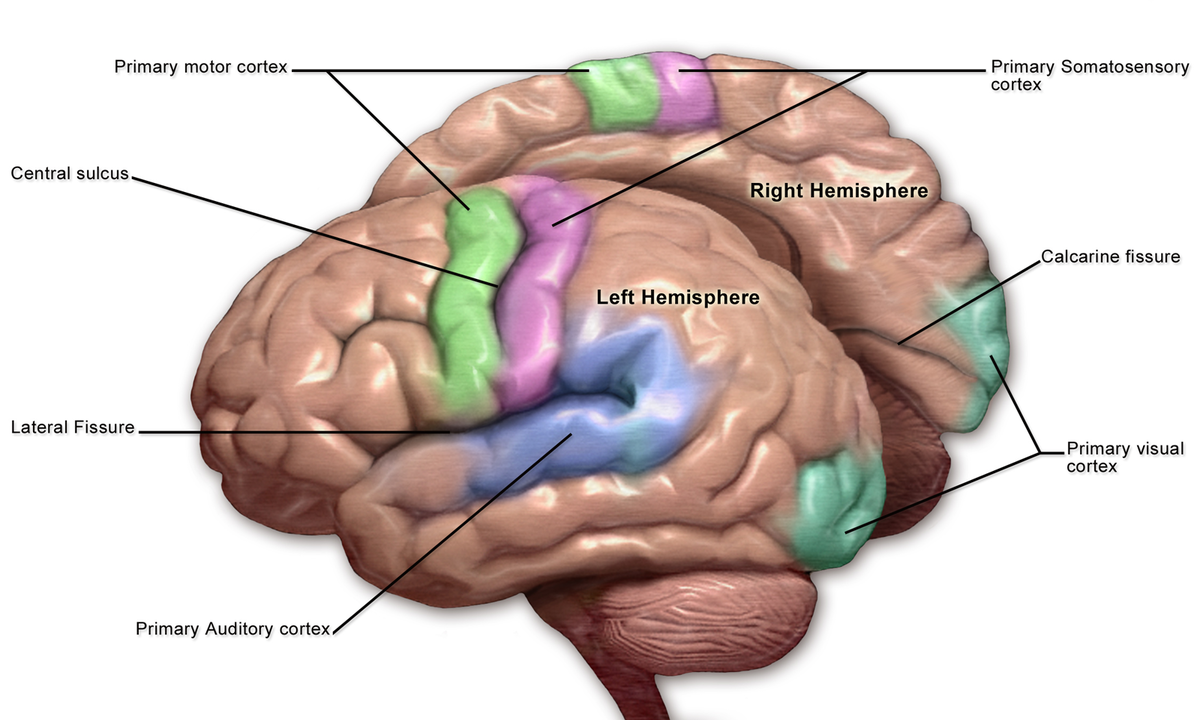
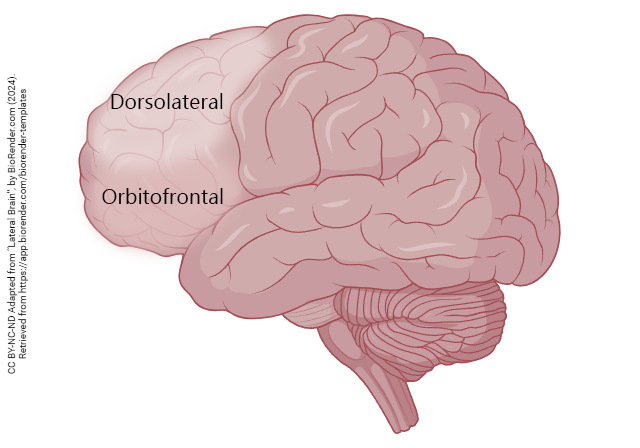 The non-motor areas of frontal cortex, in the rostralmost part of this large cortical lobe, are called prefrontal cortex. Prefrontal cortex is important for holding on to our personality and individuality, the things that make you “you”.
The non-motor areas of frontal cortex, in the rostralmost part of this large cortical lobe, are called prefrontal cortex. Prefrontal cortex is important for holding on to our personality and individuality, the things that make you “you”.
Among the important programs stored here are toilet training and social graces.
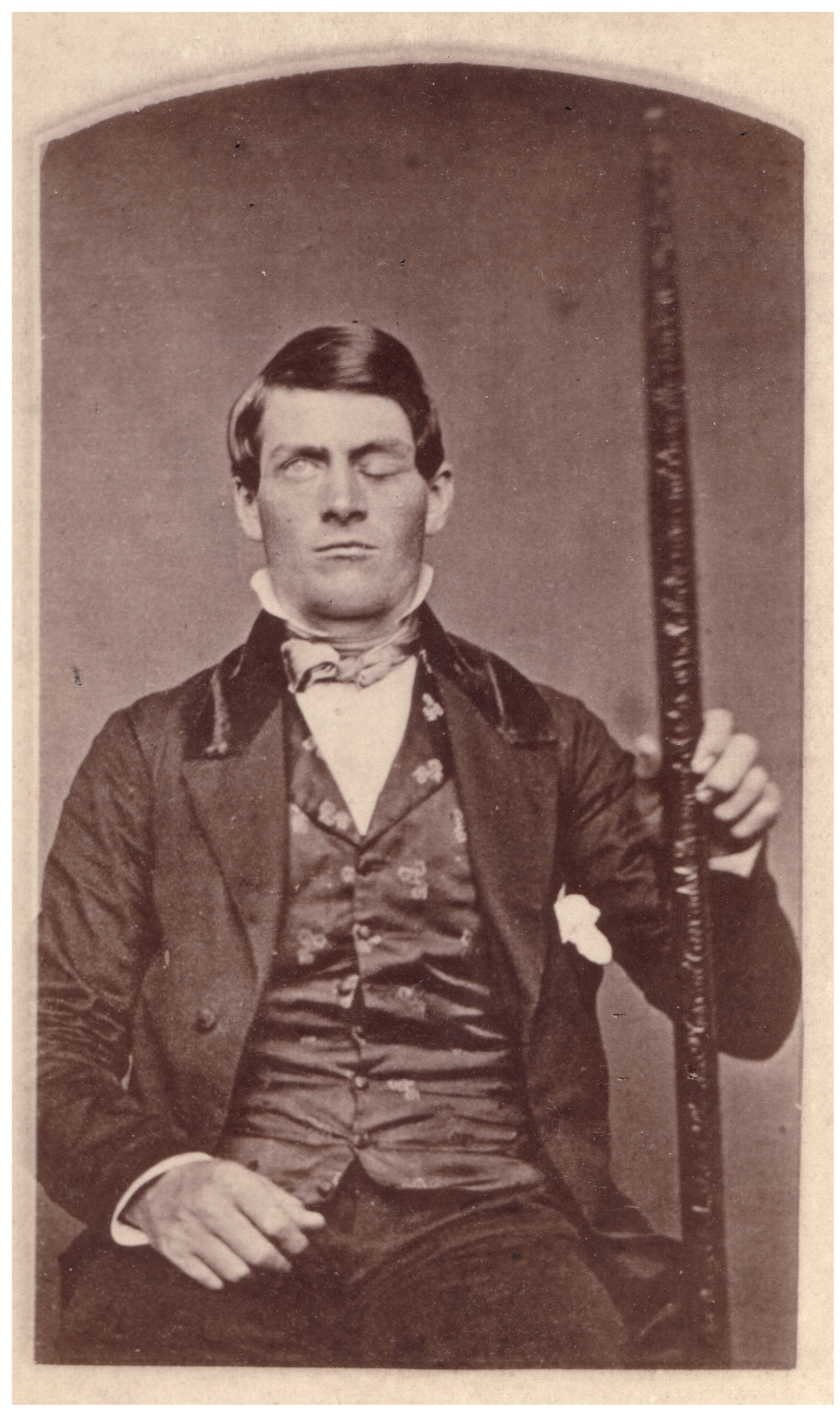
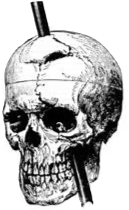
The story of how we discovered the importance of prefrontal cortex is both fascinating and horrifying. In 1848, a railroad construction foreman named Phineas Gage suffered a terrible accident: a pointed steel rod, about 4 feet long and 1 ¼ inch diameter, was blown through his left cheek and out the top of his head, obliterating his left eye and a good chunk of prefrontal cortex in the process. Miraculously, Gage survived. However, his personality changed and he was no longer much fun to be around. In essence, he lost his kindergarten training. This was the first indication that specific functions, in this case personality, could reside in specific areas of the brain. When we talk about motor cortex, or visual cortex, or auditory cortex, as we have above, it’s because Gage’s accident pointed the way to our conception of the brain as made up of a cluster of semi-independent modules each performing a specific function. This view has been validated by neurological studies (for example in stroke) that have been carried out in the almost 200 years since his accident. Some medical pioneers had no choice in the matter.

